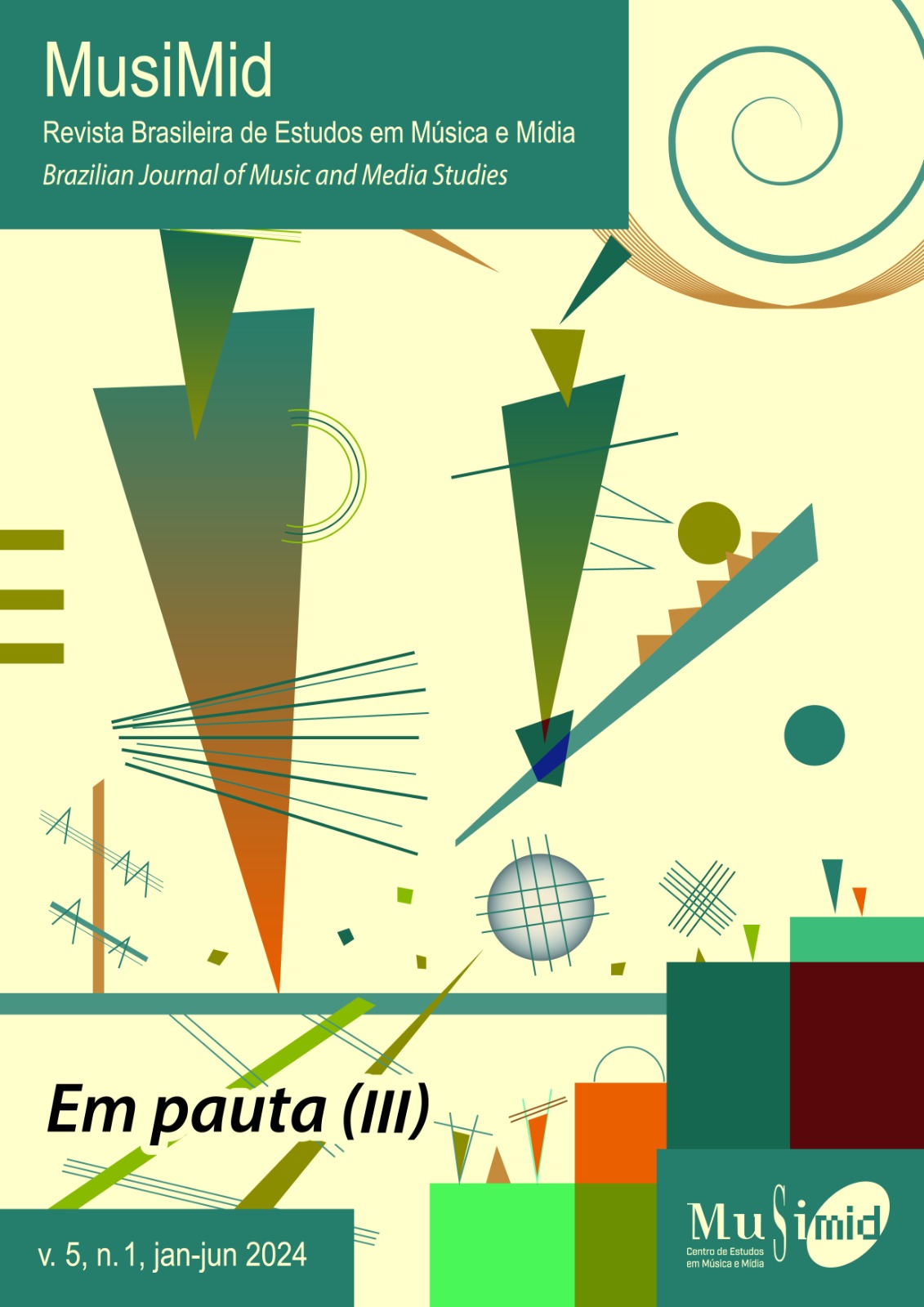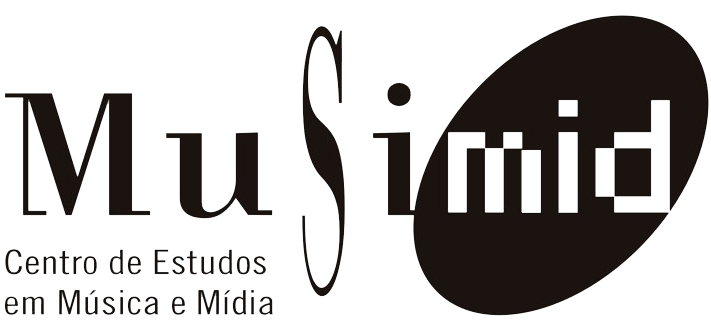Broadsides & Records: as baladas tradicionais britânicas, da tradição oral às mídias
Palavras-chave:
Baladas britânicas, Música tradicional inglesa e escocesa, Broadsides, FonogramaResumo
Este artigo apresenta um estudo sobre o repertório de baladas tradicionais inglesas e escocesas, destacando sua transição de uma manifestação artística de tradição oral para o registro impresso do texto literário em grandes folhas de papel, chamadas broadsides, até o registro das melodias em partituras ou fonogramas no século XX. Inicialmente, será apresentada uma visão panorâmica do repertório de baladas tradicionais britânicas e de sua importância na formação da tradição da canção estadunidense e do rock anglo-americano, além de uma breve caracterização dos modos orais de propagação. A seguir, será abordada a coleção de baladas compilada por Francis James Child (1825-1896), que definiu um cânone fundamental do repertório, além do trabalho de Bertrand Harris Bronson (1902-1986), que se dedicou ao estudo musical, organizando as variações melódicas conhecidas de cada balada compilada por Child, juntamente com as diferentes versões do texto literário, quando disponíveis. Em seguida, estarão em destaque os broadsides e seu papel na circulação e fixação do repertório, bem como os registros fonográficos mais recentes, que incluem artistas de grande repercussão midiática.
Downloads
Referências
Aldrich, Richard. 1927. “Beethoven and George Thomson”. Music & Letters, v.8, n.2: 234-242.
Banfield, Stephen, and Ian Russell. 2001. “England”. Grove Music Online. https://doi.org/10.1093/gmo/9781561592630.article.40044.
Baum, Paull Franklin. 1916. “The English Ballad of Judas Iscariot”. PMLA/Publications of the Modern Language Association of America 31, n.2: 181–189. https://doi.org/10.2307/456954.
Bohlman, Philip Vilas. 1988. “The Study of Folk Music in the Modern World.” In The Study of Folk Music in The Modern World, March 19. https://doi.org/10.2979/TheStudyofFolkMusici
Bronson, Bertrand Harris. 1959. The Traditional Tunes of Child Ballads: With Their Texts According to the Extant Records of Great Britain and America, v. 1. Princeton Legacy Library. Princeton University Press.
______. 1962. The Traditional Tunes of Child Ballads: With Their Texts According to the Extant Records of Great Britain and America, v. 2. Princeton Legacy Library. Princeton University Press.
______. 1946. “Folk Song and the Modes”. The Musical Quarterly, vol. XXXII. January: 37-49.
Child, Francis James. 2003. The English and Scottish Popular Ballads. 5 vol. New York: Dover Publications, Inc.
Geiringer, Karl. 1949. “Haydn and the Folksongs of the British Isles”. The Musical Quarterly, v. 35, n. 2: 179-208.
Howes, Frank. 1953. “The Influence of Folk Music on Modern English Composition”. Journal of the International Folk Music Council 5, no. 1: 52-54. https://doi.org/10.2307/836153.
Lamson, Roy. 1939. “English Broadside Ballad Tunes of the 16th and 17th Centuries.” Papers Read by Members of the American Musicological Society at the Annual Meeting, 112–21. http://www.jstor.org/stable/43873165.
Malone, Bill. 2018. Country Music USA. 50th anniversary ed. Texas: University of Texas Press. (Versão ampliada com a colaboração de Tracey E. W. Laird)
Nettl, Bruno. Folk Music in the United States: an Introduction. 3rd ed. Detroit, Wayne State University Press.
Ó hAllmhuráin, Gearóid. 2017. A Short History of Irish Traditional Music. Dublin: The O’Brien Press.
Porter, James et al. 2001. “Ballad”. In Grove Music Online. https://doi.org/10.1093/gmo/9781561592630.article.01879.
Porter, James, and Jeremy Barlow. 2001. “Balladry, Folk and Popular”. Grove Music Online. https://doi.org/10.1093/omo/9781561592630.013.90000382019.
Rollins, Hyder E. 1919. “The Black-Letter Broadside Ballad.” PMLA - Publications of the Modern Language Association of America 34, no. 2: 258–339. https://doi.org/10.2307/457063.
Starr, Larry, and Christopher Waterman. 2018. American Popular Music: from minstrelsy to MP3. 5 ed. Oxford & New York: Oxford University Press.
Tagg, Philip. 2018. Everyday tonality II: towards a tonal theory of what most people hear. New York & Huddersfield: The Mass Media Music Scholars’ Press.













